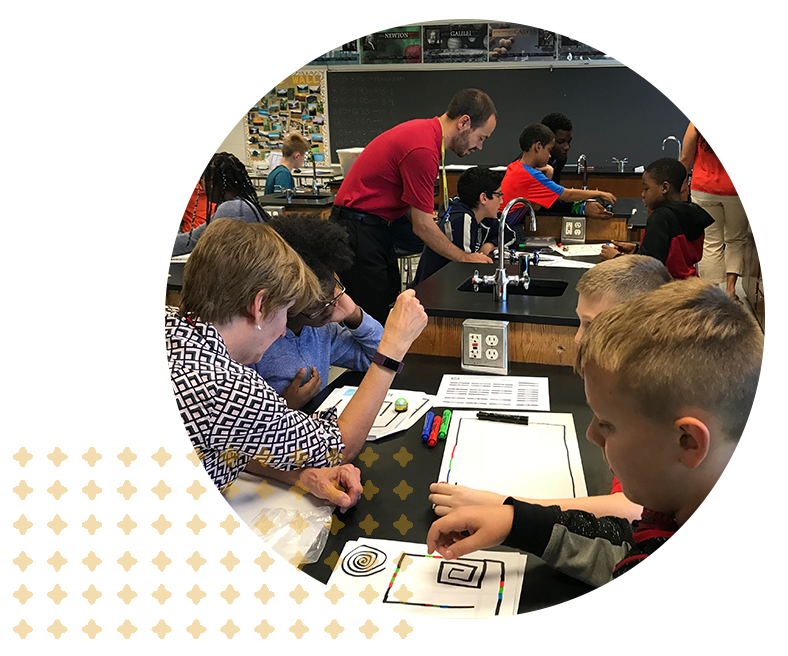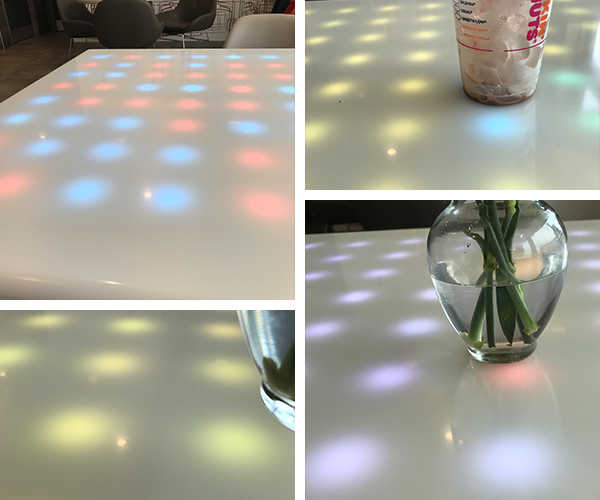
Educator
Featured Activities

STEM Activities for Your Classroom
Light Up a Sense of Wonder
I stopped for a sandwich at my local McDonalds where remodeling had recently been completed. Out of the corner of my eye I noticed a plastic-topped table with lights underneath the surface. See the photos to the right. Curious, I sat down and was intrigued immediately. As the lights changed colors, I looked to see if I had any control over the color changing, and it looked like I did. A lesson—appropriate for middle-schoolers (well, really everyone) was born.

Lesson Idea
- Show pictures and video of the table and talk about it with your students. Here are some possible questions you could use in your discussion.
- Have you seen these tables, or something like them?
- What observations did you make?
- What questions did you ask as you watched?
- Did you try any experiments?
- How do you think the table works?
- How could we find out how it works?
- Visit McDonalds to obtain additional video footage with your smartphone. Or, more desirably, ask the students to record observations with their own phones as they visit. You can also find pictures and video on line. See Resources below for video.
- Ask the students to develop questions—as a group or in pairs—and design investigation(s) to answer their questions. They could work in pairs or in small groups to investigate individual questions, or you could work as a class to answer the questions that the group chooses. Several students working to answer the same question would model good scientific process, especially if they have developed different methods to answer the question. This provides an excellent opportunity to talk about good experimental design; including the ideas of considering validity and reliability in one’s design.
- How will the students collect and record data? What are appropriate methods? As the students work they could have small group meetings to report on their efforts and provide feedback to each other. As emerging scientists, plan to have them communicate their results and discuss conclusions in a formal manner. Formal can be fun; how about creating a feature about the tables for a kids’ television show?
Connecting to the 3 Dimensions of the Next Generation Science Standards
Plan this unit to integrate NGSS Practices as your students explore the phenomenon of squirrel color or squirrel behavior.
The NGSS Practices
- Asking questions (for science) and defining problems (for engineering)
- Developing and using models
- Planning and carrying out investigations
- Analyzing and interpreting data
- Using mathematics and computational thinking
- Constructing explanations (for science) and designing solutions (for engineering)
- Engaging in argument from evidence
- Obtaining, evaluating, and communicating information
There are multiple Disciplinary Core Ideas that can be addressed as your class studies these tables, for example: Middle School-Engineering, Technology, and the Application of Science, ETS1. A, B and C and Elementary School-Physical Science, PS3.B
Cross Cutting Concepts? Yes! Patterns, Cause and Effect, Stability and Change, are some of the CCC that will be addressed in their work and your class debrief. Make sure to explicitly discuss the Concepts and ways in which they have connected to other science work completed. e.g., “Where else have we seen Cause and Effect, recently?”
